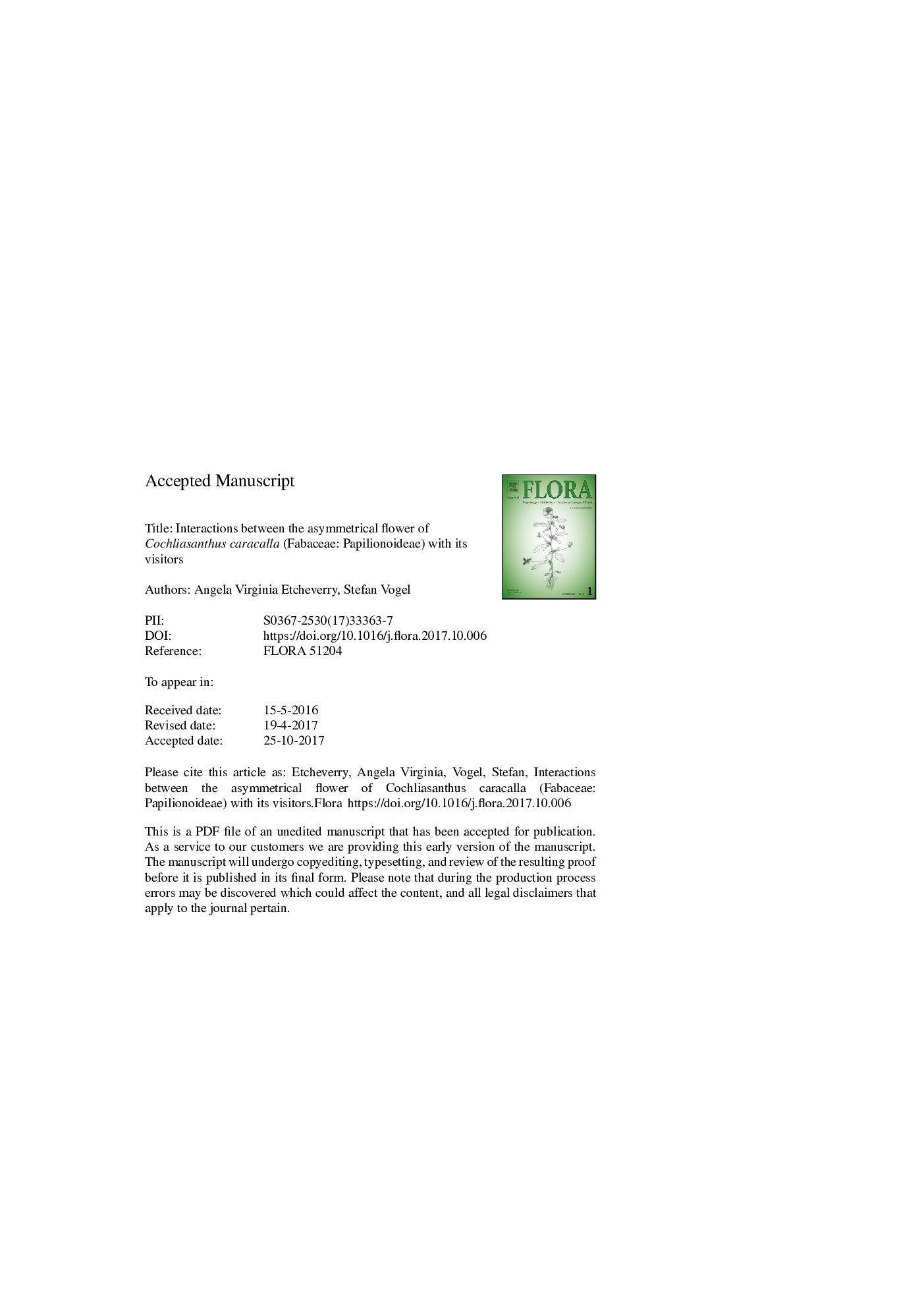| Article ID | Journal | Published Year | Pages | File Type |
|---|---|---|---|---|
| 8470211 | Flora - Morphology, Distribution, Functional Ecology of Plants | 2018 | 41 Pages |
Abstract
The South American Cochliasanthus caracalla (L.) Trew (=Vigna caracalla (L.) Verdc.) has the most complex flower among Papilionoideae. In this study we describe a) floral functional morphology, b) nectary and nectar traits, and c) floral visitors' behaviour. The flower presents an intricate connection of flower parts which allows mechanical cooperation. Mean nectar production per flower was 24.0 ± 4.0 μl. Mean sugar concentration and mass were 41.4 ± 2.2% and 11.7 ±1.8 mg respectively. Despite the floral complexity, Bombus morio, Xylocopa eximia and Centris bicolor triggered the pollination mechanism successfully. The pollen was deposited onto the dorsal side of pollinators. Most visitors are adapted to flower characteristics in their morphology and behaviour, although some act as thieves due to some of their morphological features. We observed morphological variation in the positioning of the stigma at the level of individuals. To the authors' knowledge, the present study is the first one that describes a variability of the stigma positioning in Papilionoideae.
Related Topics
Life Sciences
Agricultural and Biological Sciences
Ecology, Evolution, Behavior and Systematics
Authors
Angela Virginia Etcheverry, Stefan Vogel,
